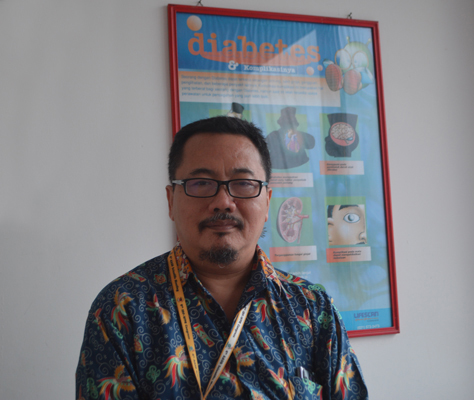
Diabetes melitus (DM) is a serious world problem, including for Indonesia. Indonesia ranks fourth among countries with highest DM prevalence after India, China, and the U.S. It is predicted that the number of people with diabetes type 2 will increase in Indonesia until 21.3 millions by year 2030.
“More than 60 percent of people with diabetes are not aware of the disease. Most come to the doctor when they already have complications,” said internal disease specialist at Faculty of Medicine UGM, dr. R. Bowo Pramono, Sp.PD.KEMD(K), on Wednesday (6/4).
Bowo emphasised on the importance to raise awareness to identify the symptoms as early as possible. The symptoms are 3P, polyuria (frequent urination), polyphagia (excessive hunger), and polydipsia (excessive thirst), in addition to unexplainable weight reduction.
“These symptoms are often ignored and considered not worrisome, so people don’t go to the doctor,” he said ahead of the World Health Day on Thursday (7/4) on which the WHO raises the theme of diabetes elimination. Bowo mentioned that diabetes is not fatal but it can should there be complications.
“So, screening is required by having a check up every year,” he said.
Bowo asked people to pay more attention to their health by having a healthy lifestyle, which includes, good diet with balanced composition of nutritions, as well as regular exercise.
“Primary prevention is done so that people with diabetes risks will not get the disease, hence a screening is necessary,” said the Head of Internal Disease Unit in the Dr. Sardjito General Hospital.
Secondary prevention for diabetes patients is done so they do not have acute complications, including stroke, heart attack, nerve disorder, and amputation. Tertiary prevention is done so those who have complications will not get disabled, amputated, or dying.
“So, education and socialisation of the efforts, prevention, and management of DM are required to minimise the prevalence of diabetes nationally,” he said.

